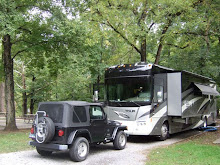The educated-class liberals, who make up about 19 percent of the electorate, and the business-class conservatives, about 11 percent, are pretty well represented by their political parties and are not likely to change. But poorer voters are more conflicted and not well-represented by either party and it's this lower middle class that could swing future elections.
Poorer folks have already had such an impact. In 2004, George W. Bush won the white working class by 23 percentage points. Why have so many working class voters aligned themselves with the GOP?
These working-class folk like the G.O.P.'s social and foreign policies, but the big difference between poor Republicans and poor Democrats is that the former believe that individuals can make it on their own with hard work and good character.Brooks concludes with the assertion that Republicans haven't yet figured out how to explore their biggest growth market, but they will have to in order to compete with Hillary Clinton who is already very popular with poor Republicans.
According to the Pew study, 76 percent of poor Republicans believe most people can get ahead with hard work. Only 14 percent of poor Democrats believe that. Poor Republicans haven't made it yet, but they embrace what they take to be the Republican economic vision - that it is in their power to do so. Poor Democrats are more likely to believe they are in the grip of forces beyond their control.

No comments:
Post a Comment